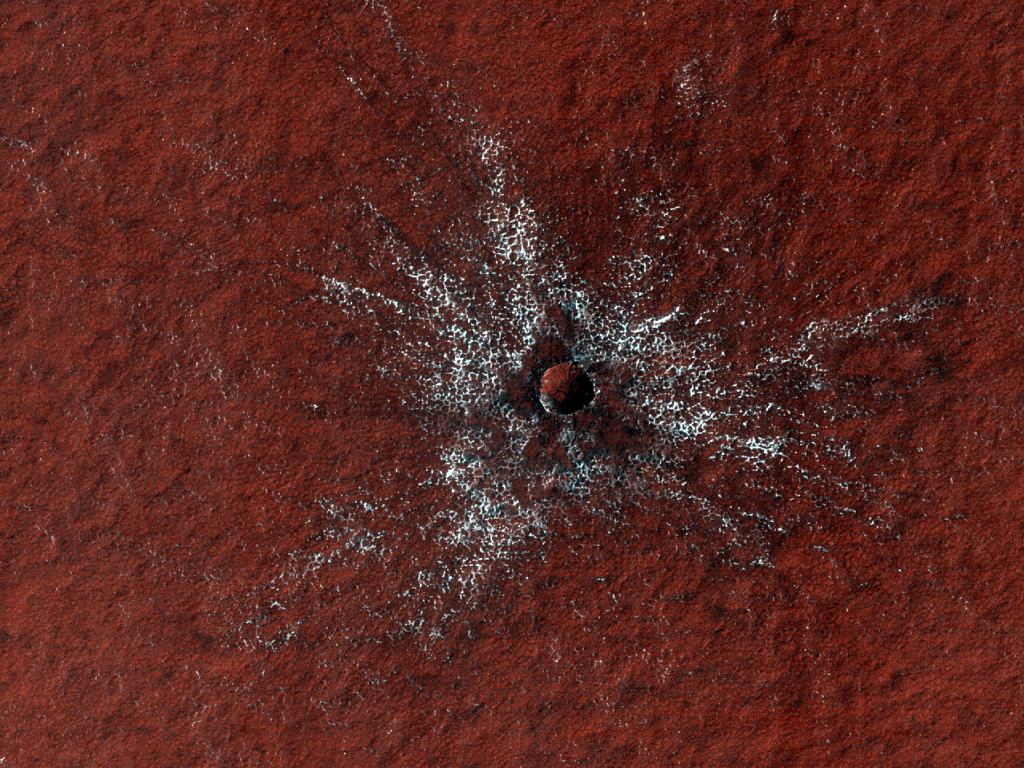Changes are always taking place on Mars, from factors like seasonal variations and wind. But there's one other aspect that changes the surface of Mar quite often: impacts.
Here's a new impact crater that was seen by the Mars Reconnaissance Orbiter. Exactly when the crater formed is not known, but this image was taken on July 24, 2020 and in a previous image of this site taken in 2018, the crater is not there.
This is an example of the benefit of having long-term missions in orbit or on the surface of other worlds, where scientists can see changes like this. The usual procedure for finding new craters is that MRO’s Context Camera, or CTX, or cameras on other orbiters identify anomalies that appear in new images and then MRO's High Resolution Imaging Science Experiment (HiRISE) camera is targeted to follow up by imaging regions in greater detail.
With data gathered by these cameras, scientists have been able to estimate that Mars gets pummeled with about 200 impacts per year, but most are fairly small. Data on the size of this crater is not yet available, but the HiRISE team says that follow up images like this one is essential for measuring the crater diameter and confirming if there are any small, bright areas indicative of ice.
While bright areas do appear in this image, ice is unlikely because the crater is located near Mars' equator and the image was taken in the afternoon. Additionally, if you look at the entire strip of the full image taken by HiRISE, white areas are ‘dusted’ across the entire region.
More likely, this image was taken some of the various filters that highlight various minerals on Mars, using false color. "False" color means that the color is not the "true" color human eyes would see on Mars. This is because the HiRISE camera views Mars in a different part of the spectrum than human eyes do. The HiRISE teams says that nevertheless, false color imagery is extremely valuable because it illuminates the distinction between different materials and textures.
 Universe Today
Universe Today

